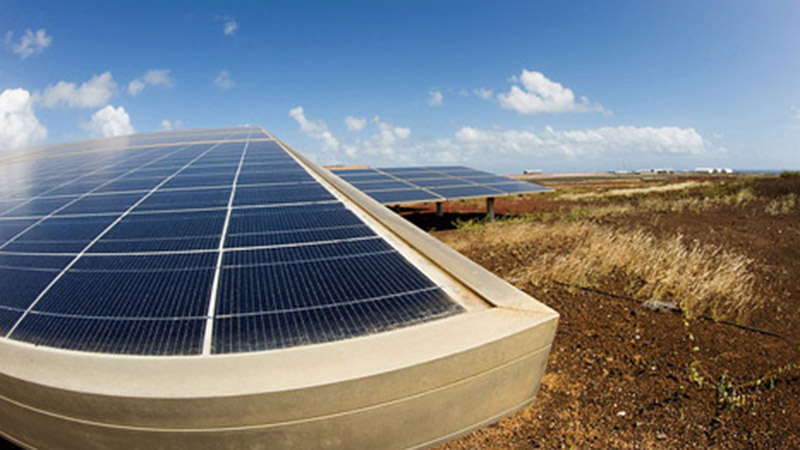Last year was a “turning point” for renewables, according to the International Energy Agency.
Half a million solar panels were plugged in every day worldwide and two wind turbines an hour. More than half of new power capacity came from clean sources.
Still, the influential forecasters see installation rates flatlining to 2021 under prevailing policy and market conditions.
“There are a number of barriers that are still unsolved,” said IEA renewables lead Paolo Frankl in a press call. “If you don’t put in place the right strategies and the right policies, you risk to hit the wall.”
Grid infrastructure, policy stability and availability of finance will be needed to maintain momentum, he advised. Those are detailed in an “accelerated” scenario, which leads to 30% more growth over the period.

The clean power installation rate stalls under the IEA main case, represented by the black dashed line, but can keep rising with supportive policies (Source: IEA Medium-term renewable energy market report 2016)
The IEA’s main case is in line with the climate pledges countries submitted towards the Paris Agreement last year. Like those pledges collectively, this scenario does not go far enough to stay within the agreed 2C limit on global warming, let alone the 1.5C aspirational goal.
Its accelerated case would put the electricity sector on a path consistent with 2C, Frankl said. For the first time next year, the IEA will publish a dedicated report on what it would take to get to 1.5C.
China is the biggest driver of the renewables revolution, accounting for about 40% of growth. The US overtook the EU to second place in 2015, boosted by an extension of tax incentives as European markets suffered from policy uncertainty.
Report: Wind, solar costs undercut new coal plants in South Africa
India is one to watch, with the IEA expecting it to fall short of its 175GW by 2022 renewables target on current trends.
“India’s renewable energy target is ambitious and it implies a capacity growth rate of roughly 20% annually and more than a five-fold growth in just seven years,” said Frankl.
“While our forecast for onshore wind is in line with government targets, solar PV expansion needs to accelerate faster.”
Analysts pointed to concerns about the financial health of state-owned utilities, grid infrastructure, local governance and land acquisition.
Weekly briefing: Sign up for your essential climate politics update
The IEA tends to err on the side of caution when it comes to clean energy growth, giving little weight to proposed policies that have yet to be implemented.
Since the 2015 version, analysts have revised expectations upwards by 13%, in response to strengthening of policies in the US, China, India and Mexico.
“I am pleased to see that last year was one of records for renewables and that our projections for growth over the next five years are more optimistic,” said IEA chief Fatih Birol.
“However, even these higher expectations remain modest compared with the huge untapped potential of renewables. The IEA will be working with governments around the world to maximize the deployment of renewables in coming years.”
